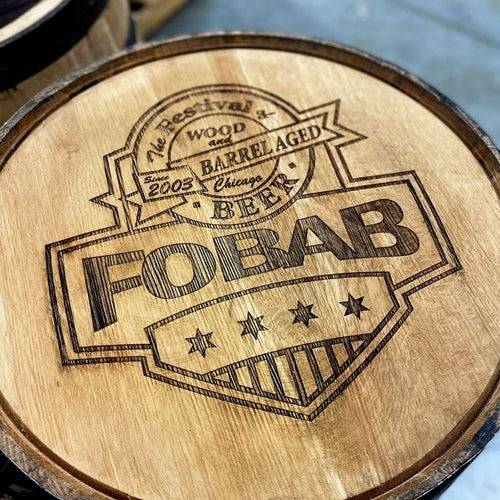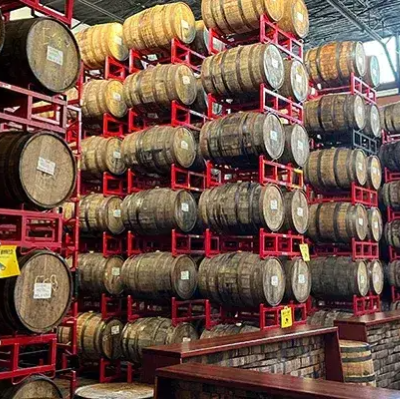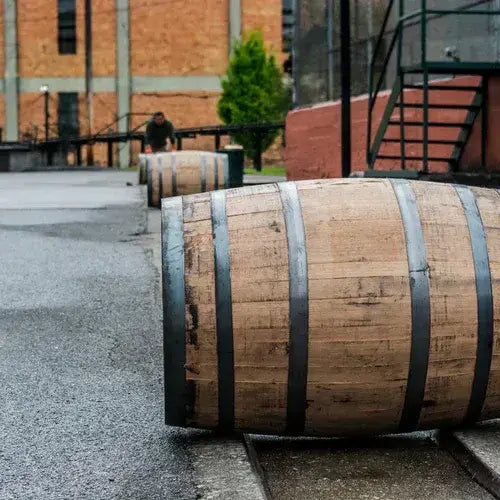Is my bourbon barrel dry?
May 1st, 2021

When it comes to ingredients, fresh is best. For brewers who are barrel-aging craft beer or a homebrewer dabbling in the style, the barrel is another ingredient. So, like all other ingredients that go into a beer recipe, quality matters.
In the barrel-aging world, quality is often determined (for the most part) by how fresh a barrel is. More freshness can impart more flavor on the beverages that are aged in them.
That’s why brewers work so hard to get their hands on the freshest barrels possible – and why we work so hard to source only the best.
However, brewers and homebrewers who are on the hunt for fresh barrels often have many questions about how fresh or dry a used barrel may be. Understandably, there’s some confusion out there about what the terms mean.
So, let’s walk through what makes a barrel “fresh” and what makes it “dry.”
WHAT’S CONSIDERED “FRESH”?
When we say a barrel is “fresh,” we mean it’s been freshly emptied by the distillery or winery and then shipped straight to us. You might also see us use terms like fresh dumped, freshly dumped and freshly emptied. It’s all interchangeable.
A fresh barrel will also still have liquid in the wood. While that liquid may not be visible, it’s still held deep within the staves. Basically, if the rings (also known as hoops or bands) are still tight and the staves appear to be tight, then it’s still fresh.
But here’s where some confusion sets in. Everyone wants a fresh barrel that’s going to add a ton of bourbon/whiskey, rum, tequila or other spirit flavor to their brew. We get that. And we only sell fresh barrels to customers who are going to fill them with beverages for aging.
However, other brokers in our line of work make promises about having visibly wet barrels all the time. While it’s not uncommon for some leftover spirit inside, this promise creates a big problem. They’re setting their customers up to believe that a barrel’s only in good condition if you can see liquid sloshing when you open it up.
That could not be further from the truth! Like we just said, it’s safe to say a barrel still has liquid in it if everything’s still tight. You’re going to be dismissing a ton of high-quality options for aging beer if each one needs to have standing liquid inside.

WHAT’S CONSIDERED “DRY”?
So, you’re probably wondering at what point a barrel can actually be considered dry.
There’s not really a date or age range we can give you. Barrels have a shelf life when it comes to usefulness for aging, but the length of time is different from one to the next.
All barrels eventually reach the end of their beverage-holding life. When this happens, all the liquid has either been emptied or has evaporated from the inside. The moisture in the staves eventually evaporates, too.
At this point, it’s safe to say the barrel is dry and is better used as decor or furniture.

SIGNS YOUR BARREL MAY BE DRY
While we can’t give you an expiration date, we can provide a list of signs of dryness. Now, not all of these signs mean the barrel is so dry that it needs to be retired. Notice two or three of these signs, though, and it could be time to move on.
VERY LOOSE RINGS
In some cases, a barrel that’s dried out will have loose rings. Give it a good look, especially on the inside, though, because sometimes all a loose ring needs is to be hammered back into position.
UNEVEN OR LOOSE STAVES
Notice any staves aren’t lining up quite right or may have a little wiggle to them? That’s a sign that things are getting pretty dry – and it’s probably going to leak.
WARPED HEAD
Heads sometimes warp as a result of loss of moisture. However, not all warping means there’s no liquid inside.
POOR STORAGE
A barrel that’s been stored in a hot and/or dry location for too long is going to dry much faster. It’s also best to avoid storing outdoors, which works well for decor barrels, but not so much for ones that are going to age beverages. Store in a cool location, like a cellar or dank basement, instead.
MISSING BUNG
If there’s no bung, then that means it has been exposed to air. That’s going to lead to less-than-ideal moisture levels (and worse) pretty quickly. Always keep bungs in place unless filling or emptying.

We don’t do “dry” here
At MWBC, every barrel we sell for aging – whether its bourbon, whiskey, wine, tequila, rum or some other spirit – is guaranteed fresh. If we come across one that looks dry or has some other problem, it’s not repaired or rehydrated – it’s retired.
Any questions about fresh vs. dry or another topic? You can find more info on our blog, The Full Pour, or reach out to us!
Cheers! 🍻

ABOUT THE AUTHOR:






